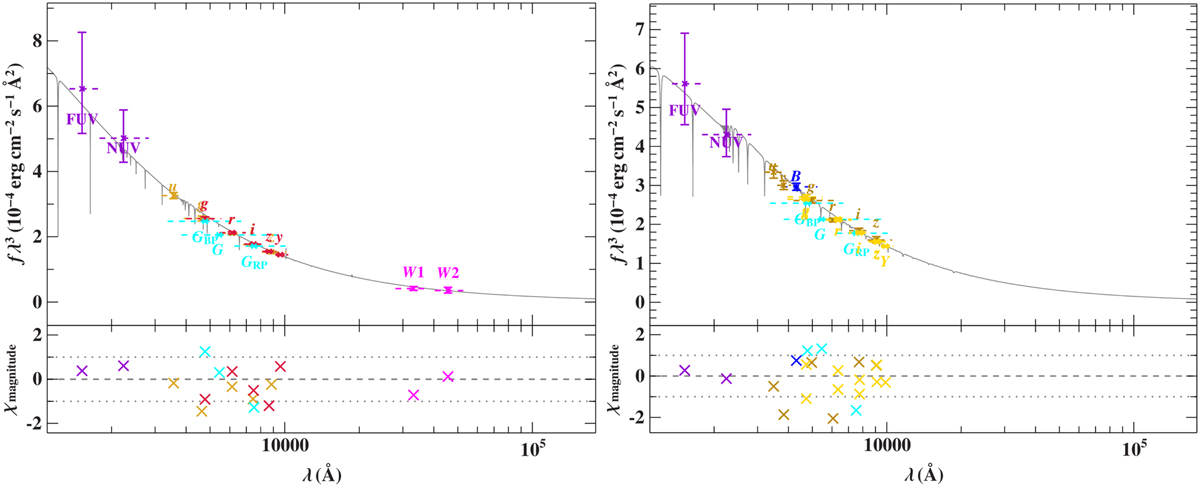Fig. 5

Download original image
Exemplary SED fits to the post-RGB candidate DAO central star of PN WDJ120728.43+540129.16 (left) and the DO WDJ211532.62–615849.50 (right). Top panels: Filter-averaged fluxes converted from observed magnitudes are shown in different colors. The respective full width at tenth maximum are shown as dashed horizontal lines. The best-fitting model, degraded to a spectral resolution of 6 Å is plotted in gray. To reduce the steep SED slope, the flux is multiplied by the wavelength cubed. Bottom panel: Difference between synthetic and observed magnitudes. The following color code is employed for the various photometric systems: GALEX (violet, Bianchi et al. 2017), Pan-STARRS1 (dark red, Chambers et al. 2016), Johnson (blue, Henden et al. 2015), Gaia (cyan, Gaia Collaboration 2021), SDSS (golden, Alam et al. 2015), Skymapper (golden, Wolf et al. 2018), Dark Energy Survey (yellow, Abbott et al. 2018), and WISE (magenta, Schlafly et al. 2019).
Current usage metrics show cumulative count of Article Views (full-text article views including HTML views, PDF and ePub downloads, according to the available data) and Abstracts Views on Vision4Press platform.
Data correspond to usage on the plateform after 2015. The current usage metrics is available 48-96 hours after online publication and is updated daily on week days.
Initial download of the metrics may take a while.


